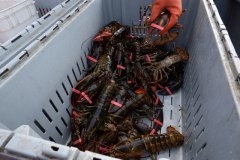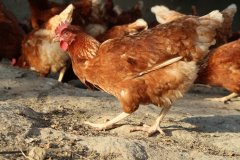Guidelines for friendly egg production revised the increase of space in chicken sheds can not be forced to change feathers and lay eggs.
The Taiwan Council of Agriculture recently revised and sent a letter to the definition and guidelines of the Egg friendly production system. The biggest difference before and after the revision lies in reducing the feeding density of grazing and flat feeding, not being forced to molt, and not being allowed to enter the chicken farms of the non-friendly production system after elimination, and raising the conditions for rich cage feeding to EU standards.

The Council of Agriculture promoted economic animal welfare and implemented the definition and guidelines of Welfare Egg-friendly production system in July 105. although it does not stipulate that laying hens must be raised in accordance with the guidelines, they must comply with the guidelines for friendly egg production before they can be marked for sale of friendly eggs. over the past five years, more and more products have been sold in the market. The Animal Husbandry Department revised and implemented the definition and Guide of Egg-friendly production system at the end of April this year. It can be used as a reference for those who are interested in putting into the friendly egg production system.
According to the revised guidelines, the egg-friendly production system is divided into grazing, flat feeding and enriched cage feeding. An important change in the basic principle is that over-age oligoparous hens cannot induce or force molting. In general laying hens, forced molting can make laying hens quickly enter the next laying cycle and prolong the utilization time of laying hens, but forced molting is not in line with the animal welfare of laying hens, so it is prohibited to be used in friendly production systems. At the same time, new regulations have been added to stipulate that chicken farms should have appropriate places for injury, so that injured and seriously ill chickens can receive proper care.
When raising laying hens in the way of grazing, henhouses must also be provided. the breeding density of henhouses should be reduced from 12 birds per square meter to 10 birds per square meter, which can avoid urgent harm to animal welfare. at least 20 centimeters or more than the horizontal distance between the perch and the noodles or nest boxes.
Bedding materials should be installed in new hens, with a cushion floor of at least 250cm per hen; the entrances and exits of hens were originally only stipulated to be more than 45cm high and more than 1m wide, and the new provisions stipulate that the entrances and exits of hens should be at least 2m wide in total length; outdoor activity areas of laying hens should be provided with sheltering equipment, and new specific provisions of the standard for sheltering facilities should be provided, that is, 8000 square centimeters of shade or shade facilities should be provided per 100cm hens.
Grazing refers to the provision of free activities on the ground in the chicken coop indoors and outdoors, while flat feeding refers to the free movement of the chicken chicken in the chicken coop or outdoors on the bed or on the ground, and the requirements on the area of the chicken coop, nest box or laying area, perch and bedding area are all revised with reference to the grazing standard.
As for enriched cage feeding, the lower limit of cage height and the regulation of free food and drinking water have been added. According to EU standards, laying hens can still move freely even if they are raised in cages, and provide facilities to meet the behavioral needs of hens. The new regulations include a minimum height of at least 45 centimeters in the cage, free drinking water and food for chickens, a linear feed trough for 12 centimeters of food for each chicken, and at least two nipple drinking fountains for each chicken.
The Taiwan Animal Society Research Association believes that even if it is rich in cages, it can only be regarded as a transitional period of transition, and from the perspective of animal welfare, it still cannot satisfy the natural nature of hens. Chiang Wen-chuan, deputy director of the Animal Husbandry Department of the Council of Agriculture, said that at present, the mainstream of raising friendly laying hens in Europe is still rich cage feeding. Taiwan's egg-friendly production system has more farmers choosing flat feeding, but if the yield is compared, more eggs are produced by rich cage feeding.
- Prev

Risk of delay in customs clearance Australia suspends lobster exports to China
Australia has stopped exporting lobsters to China after Chinese customs stepped up inspections of live seafood. The Australian Seafood Trade Advisory Group said that as a result of increased import inspections by Chinese customs, most Australian exporters have stopped shipping lobsters to China. Australian agriculture
- Next

British study: 72% of Britons are willing to buy native eggs raised by insects
In the face of the delicious ingredients on the table, have you ever thought about the situation at the production and feeding end? Just imagine, in the process of breeding chicken or eggs on today's plate, the feed eaten is not cereal, but insects, which will affect your willingness to buy or eat.
Related
- On the eggshell is a badge full of pride. British Poultry Egg Market and Consumer observation
- British study: 72% of Britons are willing to buy native eggs raised by insects
- Guidelines for friendly egg production revised the increase of space in chicken sheds can not be forced to change feathers and lay eggs.
- Risk of delay in customs clearance Australia suspends lobster exports to China
- Pig semen-the Vector of virus Transmission (4)
- Pig semen-the Vector of virus Transmission (3)
- Five common causes of difficult control of classical swine fever in clinic and their countermeasures
- Foot-and-mouth disease is the most effective way to prevent it!
- PED is the number one killer of piglets and has to be guarded against in autumn and winter.
- What is "yellow fat pig"? Have you ever heard the pig collector talk about "yellow fat pig"?

